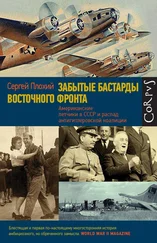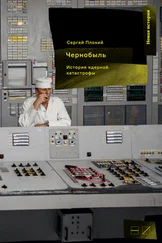As Diatlov later recalled, “the government resolution indicated that nonstandard equipment for the four blocks of the first of those stations [Nos. 1 and 2] would be produced by the same factories that produced them for the Leningrad station. But the Ministry of Medium Machine Building did not take the government resolution as an order.” No prime minister could control Slavsky, whose main responsibility was the Soviet nuclear weapons program. Nuclear power plants like the one in Chernobyl were on their own. “They said you have your own factories, so go ahead and make the equipment; we’ll provide the plans,” continued Diatlov. “I had been to several factories making auxiliary equipment for the Ministry of Energy—the machine tools were on the level of poor workshops. Commissioning them to produce equipment for a reactor was like making a carpenter do the work of a joiner. So there was constant difficulty with production for every block.” 14
Complaints about difficulties with the construction of the new units were all but ignored at the top. After all, the Chernobyl power plant was assigned reactors of the type that in theory could be built by unspecialized machine-building factories almost anywhere by almost anyone at minimum cost. The Chernobyl plant originally was supposed to use Water-Water Energy Reactors (VVERs), the Soviet equivalent of the Pressurized Water Reactors (PWRs) in the United States. Like its American counterpart, the Soviet VVER originated in the 1950s as a byproduct of building reactors for nuclear submarines. In those reactors, energy was produced by placing fuel rods, which generate heat through the fission of uranium atoms, into pressurized water. Water is also used as a coolant, to prevent the whole system from overheating. The design was extremely safe. In the unlikely event of the failure of coolant circulation, the increased heat would effectively shut down the reaction (the less water there was in the core of the reactor, the smaller the neutron moderation effect slowing the fast energy neutrons produced by water on the radioactive fuel in the rods, which could not continue the reaction without water). The VVER reactors tested quite well at a number of Soviet nuclear power plants, which was why they were initially chosen for the Chernobyl plant.
In the corridors of power, however, the VVER reactors lost in competition with the RBMK, or High Power Channel Reactor, which used graphite to moderate the reaction and water as a coolant. The RBMK reactors had an output of 1,000 megawatts of electrical energy, twice that of the VVERs. And they were not only more powerful but also cheaper to build and operate. Whereas VVER reactors required enriched uranium, RBMK reactors were designed to run on almost natural uranium-238, with an enrichment level of a mere 2 to 3 percent of uranium-235. Last but not least, the RBMK reactors could be constructed on the spot from prefabricated components produced by machine-building plants that did not specialize in the production of high-precision equipment for the nuclear industry. As far as the party leadership in Moscow was concerned, it was a win-win situation. While the rest of the world chose VVER reactors, the USSR went mostly, but not exclusively, with the RBMK type. The Chernobyl power station was caught up in the new Soviet trend.
By the time the decision was made to switch the Chernobyl reactors from VVERs to RBMKs, the latter had not yet been fully tested. But behind it stood the powerful figure of Yefim Slavsky. The director of the Igor Kurchatov Institute of Atomic Energy, Anatolii Aleksandrov, had been the scientific director for both types of reactors, and he knew their strong and weak points. But, while making the claim, mentioned earlier, that the RBMK was as safe as a samovar, Aleksandrov went along with the general preference for a cheaper and more powerful reactor over a safer one. The designers argued that the RBMKs were so safe that costs could be reduced even more by building them without the concrete structure that could contain radiation in the event of a reactor failure. Thus Chernobyl got the reactors but not the containment.
There were some dissident voices, but they were silenced or ignored. The most powerful of these voices belonged to Nikolai Dollezhal, the chief designer of the RBMK. Although Dollezhal did not disown his brainchild, he considered it a mistake to build nuclear power stations in the European part of the USSR. The whole nuclear industry, in his opinion, was not safe enough for that. Dollezhal lobbied his colleagues and petitioned the government, but to no avail. He then decided to publish an article spelling out his concerns in an academic journal. The authorities offered him publication in the party’s main ideological journal, Kommunist , instead. Publication there would require him to pull his punches, but the article would reach a broader audience, with the potential of inspiring a public discussion. Dollezhal took the deal. 15
The article, titled “Nuclear Energy: Achievements and Problems,” which Dollezhal coauthored with a fellow scientist, Iu. I. Koriakin, appeared in Kommunist in the summer of 1979, a few months after the Three Mile Island nuclear accident in the United States. In March of that year, a malfunction of the cooling system led to the partial meltdown of one of the reactors and the release of radioactive gas, which led to the voluntary evacuation of close to 140,000 people from the area. Dollezhal and his coauthor wrote that in the United States, the cost of building nuclear power plants had increased seven to eight times over because of safety concerns—a trend not followed by the Soviet nuclear industry. They were especially concerned about the quality of nuclear power equipment and safe transport of nuclear fuel and waste in the Soviet Union. With the growth in the number of nuclear energy plants, the probability of accidents would also increase, they argued. They were worried, too, about climate change as a consequence of the construction of nuclear power stations—in the Soviet Union, each plant emitted huge quantities of heat into the atmosphere—two or three units of energy for every unit turned into electric power. Dollezhal proposed that instead of building power stations in the European part of the country, as current policy dictated, nuclear stations should be located in the sparsely populated northern reaches of the USSR, close to uranium deposits. 16
Dollezhal’s article presented a huge challenge to the existing Soviet nuclear energy industry. Stations were already under construction, with billions of rubles and the reputations of leaders in the field invested in ongoing projects in the European part of the USSR, and research on long-distance transmission of electricity (which would be required if plants were built far away from populated areas) was not of high priority. According to conventional wisdom, a nuclear power plant should be a maximum of 500 to 600 kilometers from consumers. That was the logic used in choosing the site of the Chernobyl station. The Soviet academic establishment fought back. Anatolii Aleksandrov published an article criticizing Dollezhal’s ideas in the journal Problems of Peace and Socialism , intended for foreign, largely Eastern European audiences: since the Soviets were building reactors abroad, he said, safety was a paramount concern, just as it was for any other Soviet technological or industrial export. Curiously enough, the Soviet-constructed plants in Eastern Europe were of the VVER type and used water, not graphite, as a moderator of neutrons. 17
In Ukraine, Dollezhal’s concerns about building nuclear reactors in general and RBMK reactors in particular in the European part of the Soviet Union attracted the attention of the republic’s minister of energy, Aleksei Makukhin. His ministry, together with the all-Union Ministry of Energy and Electrification, oversaw the performance of the Chernobyl nuclear plant. Makukhin, like most newcomers to the field of nuclear energy, was concerned about the safety of the newly constructed reactors, but he had no independent opinion on the matter. Long before the publication of Dollezhal’s article, but already aware of Dollezhal’s reservations, Makukhin had asked Grigorii Medvedev, then a deputy chief engineer of the Chernobyl plant, for his opinion. Medvedev responded that Dollezhal was right. The RBMK reactors were indeed “dirty.” “What are the projected emissions of the Chernobyl reactor?” asked the now concerned minister, according to Medvedev’s memoir. “Up to 4,000 curies per 24 hours,” came the answer. “And of the Novovoronezh reactor?” asked the minister, referring to a nuclear plant near Novovoronezh in Central Russia employing VVER reactors. “Up to a hundred curies,” responded Medvedev. “A substantial difference.” “But the academics, after all …,” responded Makukhin. “The Council of Ministers has approved the use of [the RBMK] reactor. Anatolii Petrovich Aleksandrov praises that reactor as the safest and most economical one.” He then added: “You’re laying it on thick. No problem, we’ll take care of it.” 18
Читать дальше
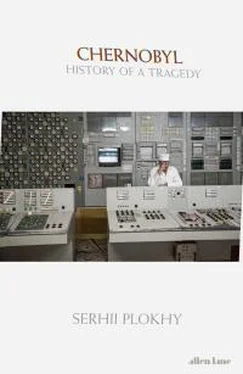

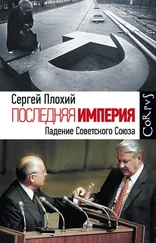



![Сергей Плохий - Чернобыль - История ядерной катастрофы [litres]](/books/385171/sergej-plohij-chernobyl-istoriya-yadernoj-katastrof-thumb.webp)
![Сергей Плохий - Человек, стрелявший ядом [История одного шпиона времен холодной войны]](/books/405163/sergej-plohij-chelovek-strelyavshij-yadom-istoriya-od-thumb.webp)

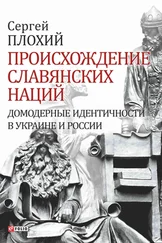
![Сергей Плохий - Потерянное царство. Поход за имперским идеалом и сотворение русской нации [c 1470 года до наших дней]](/books/433093/sergej-plohij-poteryannoe-carstvo-pohod-za-impersk-thumb.webp)
